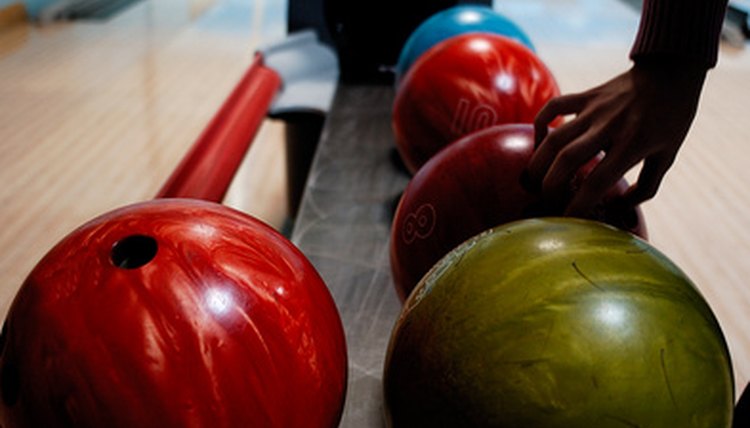How to Throw a Bowling Ball Inverted

For most regular bowlers, there are two ways to roll the ball down the lane. The most common is the straight ball, in which players attempt to line themselves up with the target and throw the ball as straight as they can. The other, a hook shot, is used by elite bowlers and tour professionals. For this shot, the bowler twists his wrist as the ball is thrown in order to create enough spin to curve, or hook, the ball into the target area. A third option, the inverted shot (or backup ball), is not used often but is easy to learn. The instructions provided are for right-handed bowlers.
Choose a proper bowling ball, if you don't already own one. For those attempting an inverted shot for the first time, it is imperative to use a ball with a weight that makes it easy to control. If it's too light, the ball will go flying out of your hand. If it's too heavy, you may drop it too soon.
Position yourself on the lane the same way you normally would. Your form should not vary much from shot to shot, so when attempting an inverted roll you should use the same opening position and stance as you would for any other shot, keeping the ball in the same location at the start of the approach.
Pick a spot on the lane to aim for before you begin your approach. A hook shot requires you to aim several boards to the right of center, since that is where you want the ball to end up halfway down the lane, before it hooks back toward the middle. Because an inverted shot is designed to curve in the opposite direction as a hook shot, the same aiming principle applies, only to the other side of the lane. If you're attempting a backup ball, you should aim several boards to the left of center.
Begin your approach. Ensure that your path to the foul line is smooth, your grip on the ball is secure and your eyes are focused on the target spot halfway down the lane.
Release the ball and complete the followthrough. An inverted hook shot is achieved by twisting the hand clockwise on release, releasing the ball when the arm is next to the leg. This leaves the hand directly in front of the body, palm up, at the end of the followthrough. This creates a reverse spin that allows the ball to carry back toward the middle on the opposite side of the lane as a standard hook shot.
References
Writer Bio
As a reporter/editor with more than a decade of experience dealing with sports on a local, national and international stage - including the Olympics and the Stanley Cup - I offer a great deal of expertise when it comes to anything sports-related
